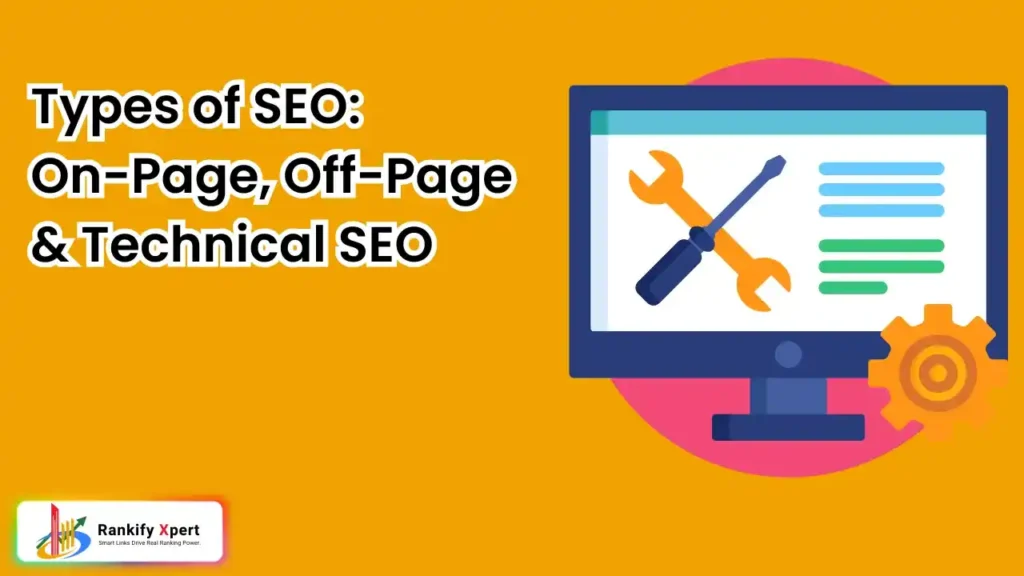Types of SEO: On-Page, Off-Page & Technical SEO
In today’s competitive digital landscape, having a website isn’t enough to guarantee online success. Search Engine Optimization (SEO) has become the cornerstone of digital marketing, serving as the bridge between your content and your target audience. SEO is a comprehensive set of strategies and techniques designed to improve your website’s visibility in search engine results pages (SERPs), ultimately driving more organic traffic to your site. But why is SEO so crucial in digital marketing? Simply put, when potential customers search for products, services, or information related to your business, you want to be found. With billions of websites competing for attention, SEO helps search engines understand what your content is about and determines whether it deserves to rank higher than your competitors. Understanding the different types of SEO is essential for anyone looking to master digital marketing. Rather than being a single approach, SEO encompasses three main types that work synergistically to maximize your online visibility: On-Page SEO, Off-Page SEO, and Technical SEO. Each type addresses different aspects of optimization, and when combined effectively, they create a powerful strategy that can significantly boost your search engine rankings. On-Page SEO focuses on optimizing individual web pages and their content, Off-Page SEO builds your website’s authority through external factors, and Technical SEO ensures your site’s backend is optimized for search engines to crawl and index effectively. These three types of SEO don’t operate in isolation – they complement each other to create a holistic optimization approach. In this comprehensive guide, we’ll dive deep into each of these types of SEO, exploring their unique characteristics, key elements, and practical applications. You’ll discover real-world examples, actionable strategies, and understand how to implement each type to achieve better search engine visibility. Whether you’re a business owner, marketing professional, or someone new to SEO, this article will equip you with the knowledge needed to navigate the complex world of search engine optimization effectively. The Three Main Types of SEO Before diving into the specifics, let’s establish a clear understanding of the three fundamental types of SEO and how they work together to create a comprehensive optimization strategy. On-Page SEO focuses on everything you can control directly on your website. This includes optimizing individual web pages through content creation, keyword targeting, meta tags, header structures, and internal linking. Essentially, On-Page SEO is about making your content as relevant and valuable as possible for both search engines and users. It’s the foundation of your SEO strategy because it directly addresses what visitors see and interact with on your site. Off-Page SEO encompasses all the activities that happen outside your website but still impact your search rankings. The most well-known aspect of Off-Page SEO is link building – earning backlinks from other reputable websites. However, it also includes social media engagement, brand mentions, guest posting, and digital PR efforts. Off-Page SEO essentially builds your website’s authority and trustworthiness in the eyes of search engines. Technical SEO deals with the behind-the-scenes technical aspects that affect how search engines crawl, index, and understand your website. This includes site speed optimization, mobile-friendliness, XML sitemaps, website structure, security protocols, and ensuring proper code implementation. Technical SEO creates the infrastructure that allows both search engines and users to access and navigate your site efficiently. Each of these types of SEO addresses a different aspect of optimization, yet they’re interconnected. On-Page SEO creates quality content, Off-Page SEO builds authority for that content, and Technical SEO ensures search engines can find and understand your content effectively. Together, they form a complete SEO ecosystem that maximizes your chances of ranking higher in search results. On-Page SEO: Optimizing What’s on Your Website On-Page SEO is the first and foremost type of SEO optimization that focuses on optimizing individual web pages to improve their ranking in search engine results pages (SERPs). It refers to all the actions you can take directly on your website to make it more relevant and appealing to both search engines and users. Think of On-Page SEO as laying the foundation of your digital presence – it’s about creating content that not only answers user queries but does so in a way that search engines can easily understand and rank. The importance of On-Page SEO cannot be overstated. It’s the most direct way to communicate with search engines about what your content is about, who it’s for, and why it deserves to rank higher than competing pages. When executed properly, On-Page SEO can lead to improved rankings, increased click-through rates, better user experience, and enhanced crawlability for search engines. Key Elements of On-Page SEO Keyword Research & Placement The cornerstone of effective On-Page SEO begins with thorough keyword research. This involves identifying the terms and phrases your target audience uses when searching for information related to your business. Once you’ve identified these keywords, strategic placement throughout your content – including in titles, headings, and naturally within the text – helps search engines understand your page’s relevance to specific queries. High-Quality, Relevant Content Content remains king in the world of SEO. High-quality, relevant content that provides genuine value to readers is essential for On-Page SEO success. This means creating comprehensive, well-researched content that addresses user intent, answers questions thoroughly, and keeps visitors engaged. Search engines reward content that demonstrates expertise, authority, and trustworthiness. Title Tags & Meta Descriptions Title tags serve as the clickable headlines in search results and are crucial for both SEO and user experience. They should be concise, descriptive, and include your target keywords. Meta descriptions, while not direct ranking factors, influence click-through rates by providing compelling summaries of your page content. Both elements work together to improve your visibility and attractiveness in search results. Header Tags (H1, H2, H3, etc.) Header tags create a logical structure for your content, making it easier for both users and search engines to understand your page hierarchy. The H1 tag typically contains your main keyword and topic, while H2 and H3 tags break down subtopics and supporting information. This structure enhances readability and helps search

